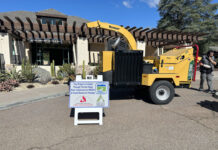In 2017 the San Diego County Board of Supervisors authorized the use of $28,000,000 of general fund revenue to improve the county’s road conditions. The plan was to repay the general fund over a period of five fiscal years beginning in 2022-23.
Two years later the county supervisors decided to keep the money in the county’s Road Fund. The supervisors voted 5-0 October 15 to cancel the transfer of the money from the Road Fund back to the general fund.
“Continuing to maintain our roads is of utmost importance,” said Supervisor Jim Desmond. “This action ensures that our road network continues to set the example of how roads should be maintained.”
At one time gas tax revenue was used for nearly all of the county’s Road Fund budget, but a combination of more drivers creating additional wear and tear on the roads, better fuel efficiency, increased mass transit use which reduced the quantity of gas purchased and thus gas tax revenue, and decreased funding from the State of California forced the county to utilize other sources.
The county maintains 1,943 centerline miles and about 4,000 lane miles of public road along with 208 bridges, 56 miles of guardrail, 18,460 culverts, traffic signals at 196 intersections, 6,702 street lights, and 37,064 traffic signs, so the county’s Department of Public Works (DPW) must spend operations money on items other than road maintenance.
The U.S. Army Corps of Engineers developed a pavement condition index which utilizes a specialized vehicle with downward facing cameras to inspect roads and determine road condition. An index of 71 to 100 is considered very good, an index of 51 to 70 is considered good, an index of 26 to 50 is considered poor, and an index of 0 to 25 is considered very poor.
The county’s pavement condition index was 71 in 2020, 67 in 2012, 64 in 2014, and 60 in 2016. A February 2017 DPW presentation to the Board of Supervisors noted that the index would decrease to 45 by 2026 in the absence of new funding. The PCI has been brought up to 62 and currently 35 percent of the county’s roads are in very good condition, 34 percent are in good condition, 27 percent are in poor condition, and 4 percent are in very poor condition.
Roads in the very good category need only routine maintenance. Remediation for roads in the good category is primarily sealing at an estimated cost of $93,720 per lane mile. An overlay costing approximately $195,800 per lane mile is needed to restore the roads which are in the poor category. Major rehabilitation including the removal of all asphalt and the subgrade base has an estimated cost of $332,640 per lane mile and is the needed treatment for roads in the very poor category.
In February 2017 the county supervisors directed the county’s Chief Administrative Officer to return to the board with a funding plan within 90 days which would identify options to reach a pavement condition index of 70 within five years. “County staff has been diligently working to accomplish this goal,” said Supervisor Dianne Jacob. “The action before us today will greatly assist us in completing this.”
DPW utilizes a pavement management system which incorporates field review, resident and community input, and mechanical test data collection to determine which roads are most in need of resurfacing. The structural deterioration of pavement is measured visually by assessing the degree and type of cracking, the surface deterioration, and surface defects.
The road maintenance program also evaluates the preferred rehabilitation strategy. Asphalt concrete pavement overlays in which two to three inches of new asphalt are laid over deteriorated asphalt roads are used for severely degraded roads with extensive cracking or potholes. If the road has only minor cracking and no significant surface damage a thinner layer of slurry seals is a less expensive option to extend the pavement life.
Senate Bill 1, which was signed by Governor Brown in April 2017, increased the gas tax by 12 cents a gallon effective November 2017 and increased vehicle registration fees between $25 and $175 based on vehicle value effective spring 2018. The tax increases are expected to provide local governments with an additional $7.5 billion of funding over ten years including $538 million for San Diego County. The county expects to receive $39.5 million of Road Maintenance and Rehabilitation Account funding during Fiscal Year 2019-20. The plan when the county advanced the $28 million in 2017 was to use Road Repair and Accountability Act funding to reimburse $5.6 million to the general fund each year.
In September 2018 the Board of Supervisors directed the county’s Chief Administrative Officer to create a working group comprised of industry associations, public agencies, and county staff to identify innovative and cost-effective pavement preservation treatments which can be used on county roads. The CAO was directed to return to the Board of Supervisors within 180 days based on the working group’s findings. In March 2019 the supervisors voted 5-0 to receive a report from the Building Better Roads working group, accept the findings, and direct the working group to continue providing potential solutions.













